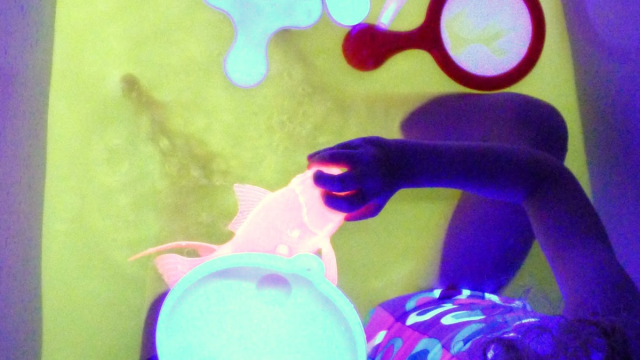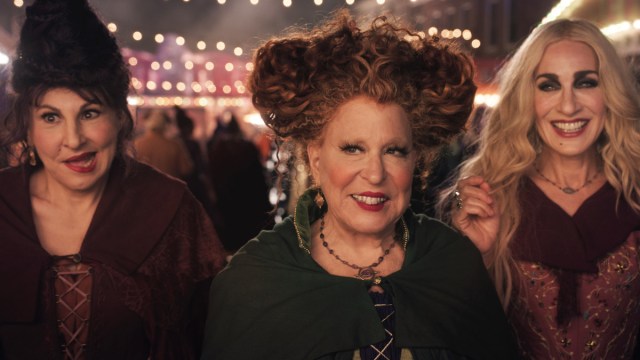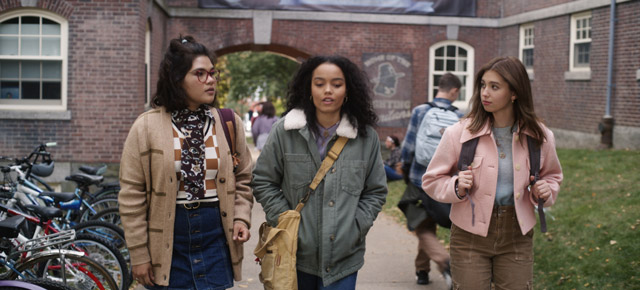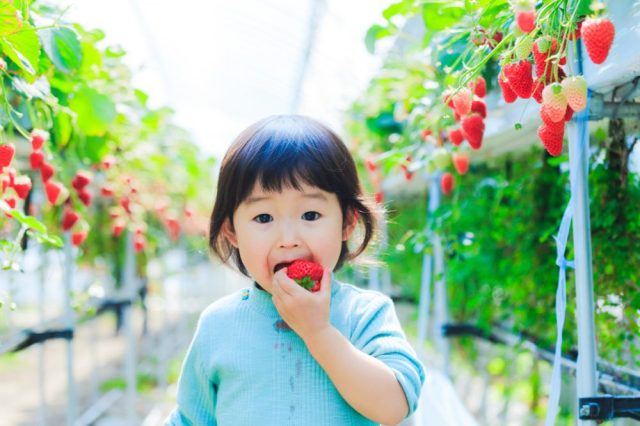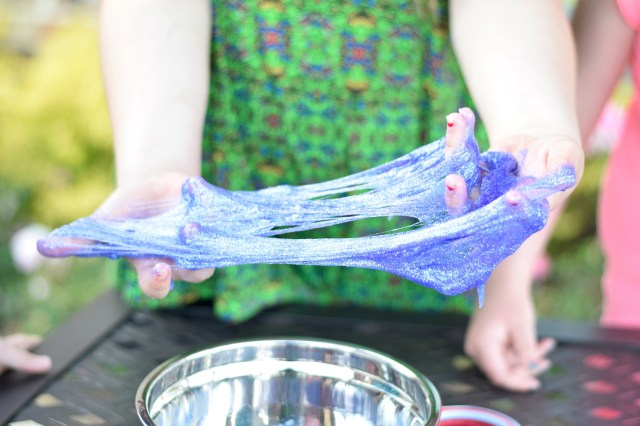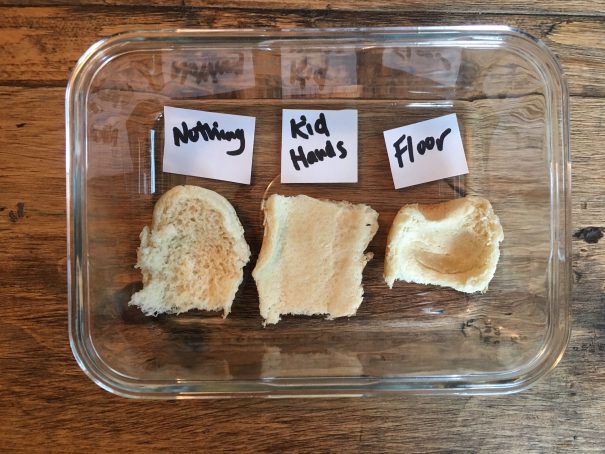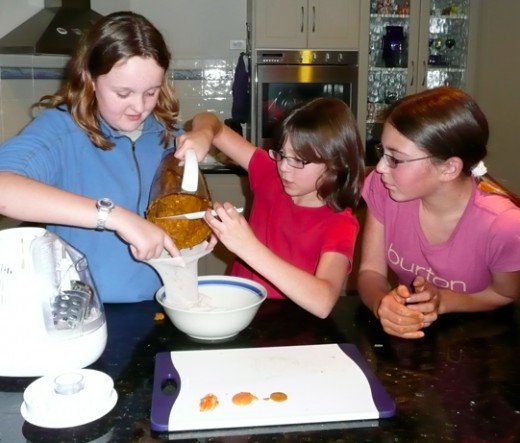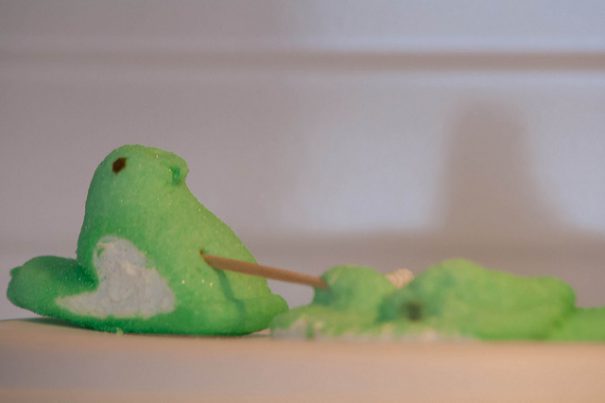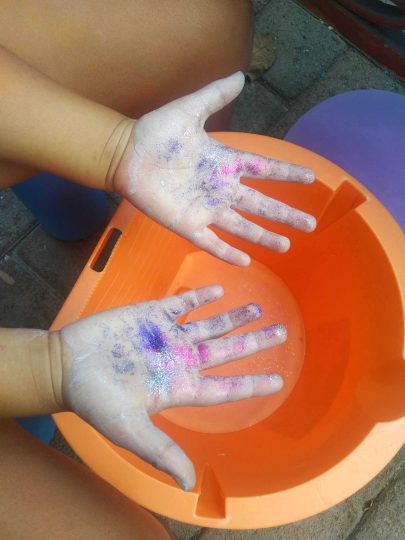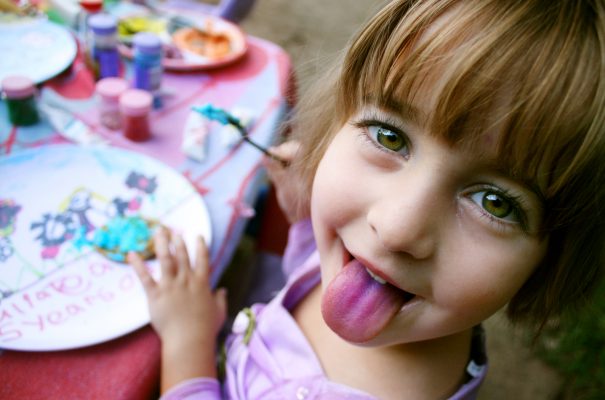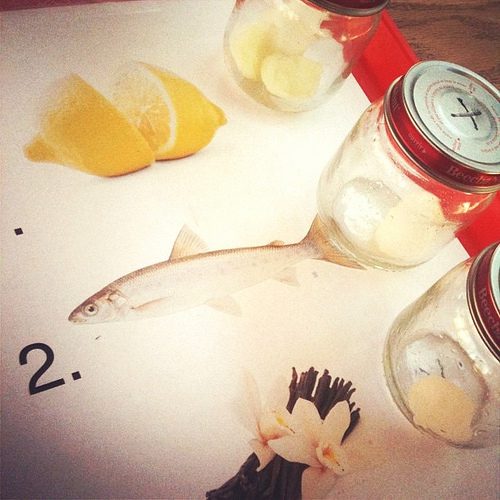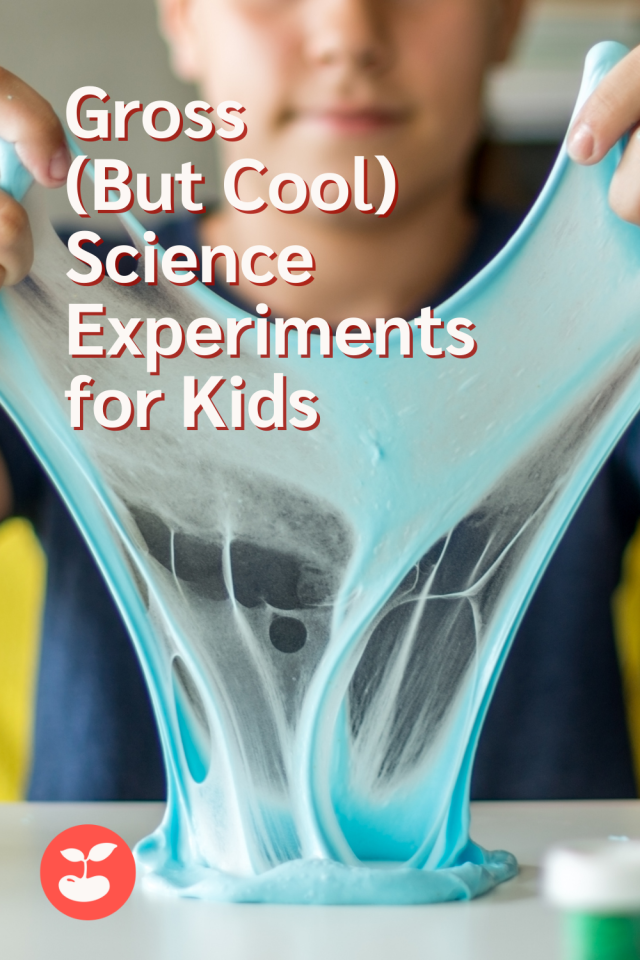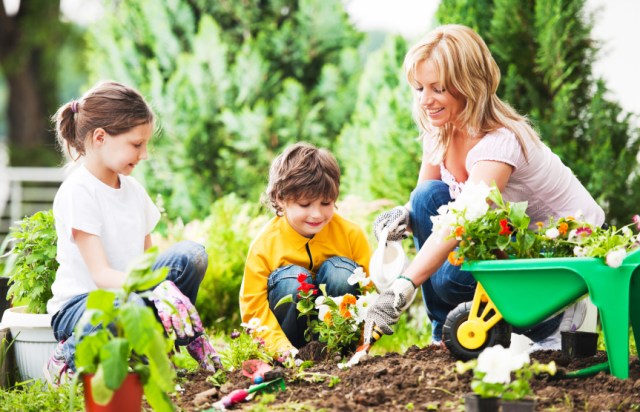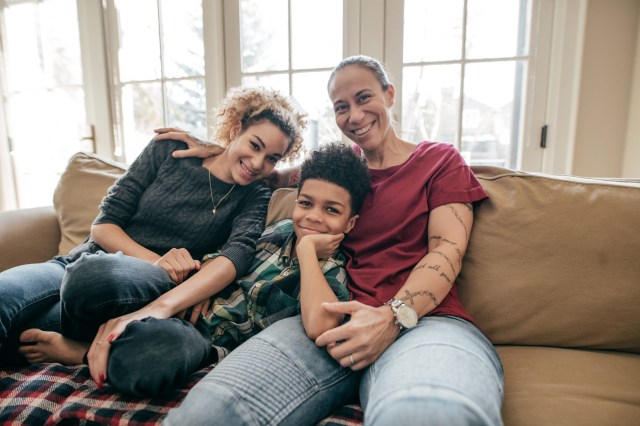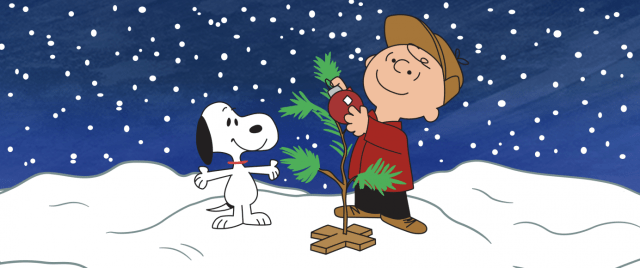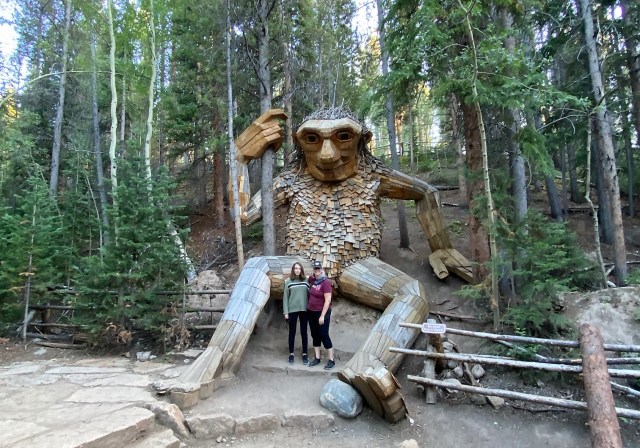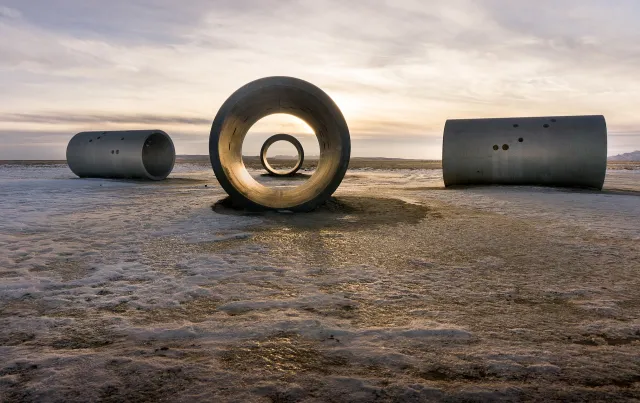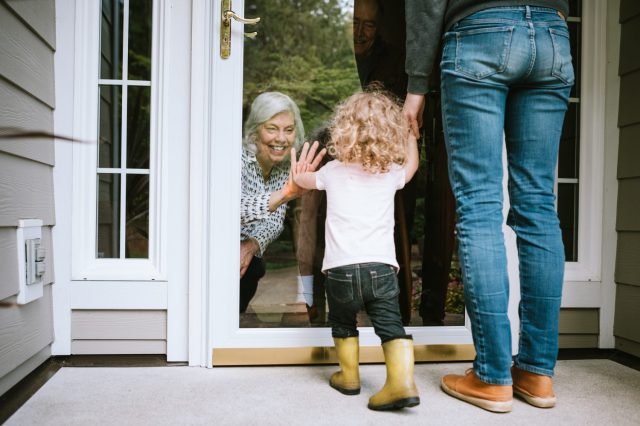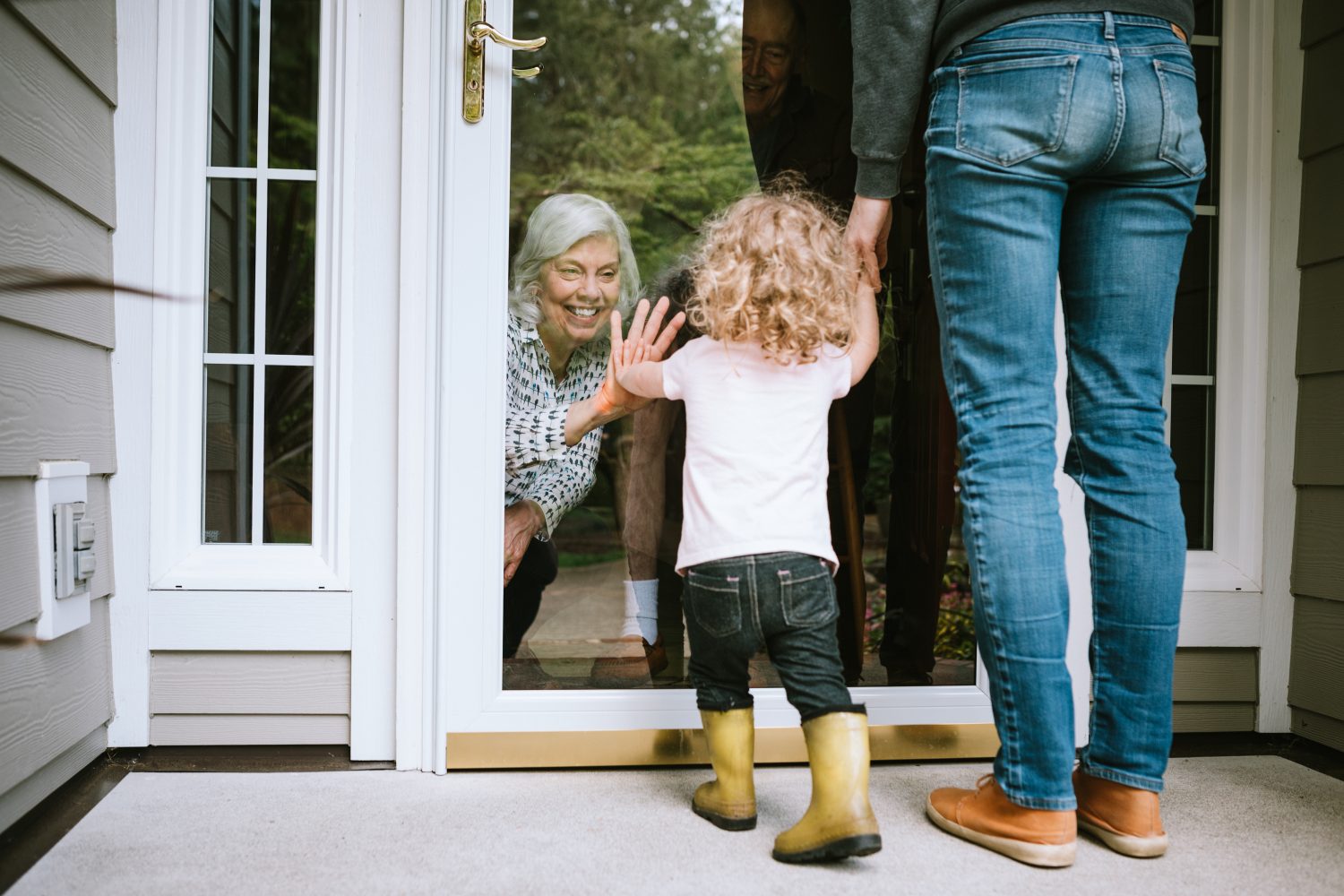We’ve got glow-in-the-dark science worthy of any home laboratory
Calling all mad—we mean mom—scientists (and daring dads, too)! Try these six glow-in-the-dark science experiments for kids after the sun goes down: we promise they will light up your night. For more projects, check out our ultimate list of science experiments for kids.
Don’t miss any of these experiments! Save this list to Pinterest by clicking here.
Glowing Bicycle Spokes

If you're looking for a fast fix on fun, snap a few glow sticks and affix them to the spokes of a bike. When it gets dark, turn the kiddos loose on their wheels and enjoy an eerily dazzling light display. If you want to up the creativity quotient, try rearranging the glow sticks to make new patterns. Just remember to attach them well, as they have a way of taking flight!
The Science Lesson: Sensory Memory
Riddle us this: Why do the three or four glow sticks you affixed to the bike spokes give the appearance of one solid line while the wheels are spinning? It's not because you're seeing the trailing lights from the glow stick. You are experiencing something known as iconic memory, which is sensory memory—or the shortest-term memory you have—that allows your mind to store an image for the few moments your brain needs to process what it has seen.
Glowing, Smoking, Bubbles
Add a little dry ice to bubble solution and the contents of an activated glow stick and get ready to rock the glow-in-the-dark scene in your neighborhood. Owlcation whipped up an awesome glow-in-the-dark science experiment to create glowing bubbles, and The Maker Mom thought to add dry ice to the same experiment here. The bubbles are out of this world—they glow and rise from the smoke. Naturally, we recommend an adult to handle the dry ice (skin contact can burn) and supervise this experiment.
The Science Lesson: Sublimation
When a substance passes directly from a solid phase to a gas phase without ever becoming a liquid, it sublimates. Dry ice sublimates to gas, and the bubbles encapsulate the gas. Activated liquid from the glow stick adds to the excitement and is an example of a chemiluminescent, or a light that is produced as an energy byproduct when a chemical reaction takes place.
Glowing Pumpkin Guts Slime

For all you gore-lovers, this experiment by Little Bins for Little Hands is low on trickery and high on thrills. We used it for our inspiration, then added a little glow stick juice to the mix. Why convert pumpkin guts into a slimy putty when you can convert them into a slimy, glowing putty? Using nothing more than the contents of a glow stick, glue, and starch, you'll have a perfectly putrid pumpkin concoction in no time.
The Science Behind the Spooky: Polymers and Non-Newtonian Fluid
The white glue that's used as a base in this pumpkin slime is a polymer or a large chain of molecules made up of smaller units that repeat themselves. Liquid starch changes the structure of the glue's molecular chain, making it thicker, and turning it into a non-newtonian fluid. A non-Newtonian fluid is neither a true liquid nor a true solid. You can pick it up like a solid; however, it will begin to flow like a liquid (especially when heated) and will also take the shape of its container.
Glowing Bathwater
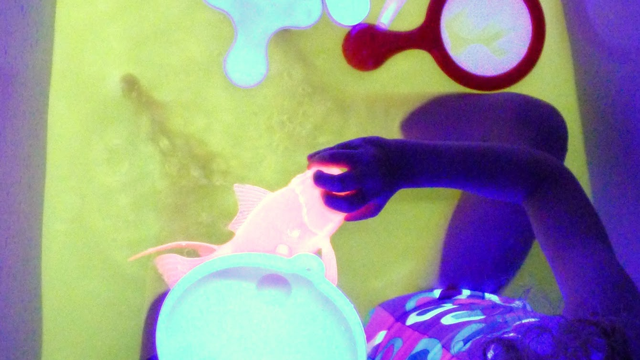
With all the options for making something glow by using the contents of a glow stick out there, we loved finding Fun at Home with Kids' recipe for glowing water that uses nothing but ground-up vitamin B-50 and a black light. And since it's not sticky and non-toxic, this makes the perfect lure for getting your bitty bats into the bathtub after a full day of haunting.
The Science Lesson: Phosphors versus Chemiluminescence
Vitamin B-50 is a phosphor, or a member of a group of substances that radiate visible light after being energized by a light source, such as the UV radiation from a black light. This particular glow is different from the light created by chemiluminescence—that is, the light is emitted as a product of a chemical reaction—which you find in a glow stick.
Glowing Oil and Water Experiment

We all know that oil and water just don't mix. But what happens when you make them glow, add kids, dim the lights, and fill their brains with words like "density" and "polarity"? Magic. That's right—Pure. Magic. We love the tutorial over at Growing a Jeweled Rose, and the best part about it is how you can turn your oil and water experiment into a DIY lava lamp when you're through.
The Science Lesson: Density and Polarity
An object's density—or how tightly packed together its molecules or atoms are—is a predictor of whether it will float or sink. Water molecules are more dense than oil molecules, and will always sink below oil. Additionally, water and oil have different polarities—or charges. Since water has both a negative and a positive charge, water molecules will attract other water molecules.
Glowing Sidewalk Chalk
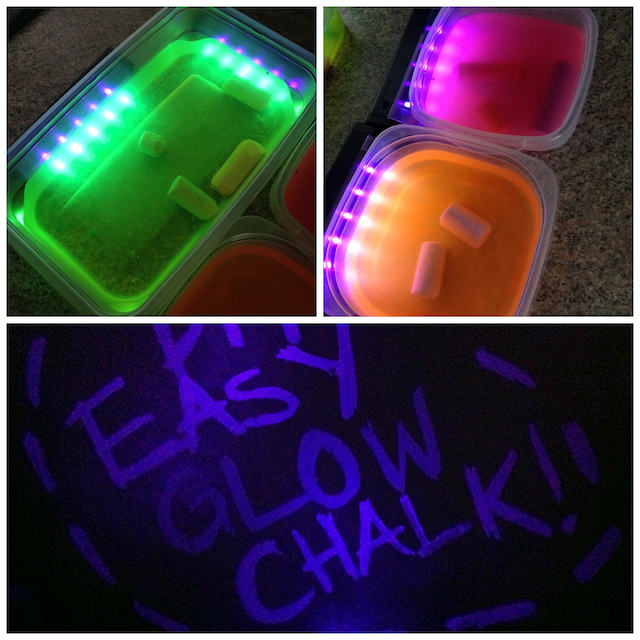
If you're really looking for some nighttime fun, you can't go wrong with this glowing sidewalk chalk. and then have them look out their windows before bedtime. This is a great one for National Night Out in August. Johanna at My Crazy Blessed Life inspired us to make our own glow-in-the-dark chalk, and we followed her recommendation to soak the chalk for two days before kicking up the fun factor with a black light.
The Science Lesson: Absorption and Properties of Salt
Chalk is a salt, and salts are all distinguished by their property to absorb water. So when you let a stick of chalk soak in glowing water overnight, it will not only absorb water but also the phosphorescent properties of the glowing agent in the water.
Related: 13 Fall Science Experiments Perfect for Kids
